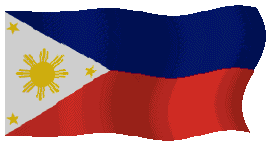Last Updated:
11/10/98 08:17:27 AM
(MANILA TIME)
The Island of Leyte
An OverviewThe island of Leyte is home to one of the oldest provinces in the country and the second island (after Samar) that renowned explorer Ferdinand Magellan landed on in the Far East in 1521. In 1595, the Spanish Jesuits established government in the island and made it, together with Samar, as a province of the Spanish colony then known as the Philippines.
It was in Leyte Gulf where the biggest single naval battle in human history was fought between the Allied troops under Gen. Douglas MacArthur and the Japanese Imperial Fleet during World War II. The island was the first to be invaded by the Allied forces in the Philippines. Today, countless memorials to the valor and sacrifice of the different nationalities who perished in battle dot the island.
The island is politically divided into three provinces, Leyte, Southern Leyte and Biliran. The term "Leyte" is used interchangeably to refer to the island and the province. It has two cities: Tacloban, the center of government in the Eastern Visayas region to the east; and Ormoc, to the west.
Infrastructure in the island is mostly at par with the rest of the other islands in the Philippines. To put it diplomatically, it has great room for improvement. Leyte boasts of having the best road network in the region with a two-lane cemented national highway circumnavigating the island. However, sections composed of several kilometers of this main road are still under construction and, though navigable, is difficult and sometimes impassable after bad weather. Hotels, restaurants and other forms of accommodation could only be found in the two cities and some major towns. The best hotel in the island (and the region) is a 3-star hotel.
Leyte˝os (as the people are called) speaks two main dialects: Waray-waray and Cebuano. The majority also speaks English and Pilipino, the national language. English remains the de-facto language in government and the schools. Even the people in the more remote areas in the island could carry on a reasonable conversation in English.
Tacloban City is the center for air, water and land transportation in the region. It has an airport that services about three flights of commercial passenger planes daily to and from Manila. Air travel from Manila takes about an hour. At the time of this writing, passenger ships have stopped their regular twice-weekly route to and from Manila claiming lack of profit. However, cargo ships regularly dock at the Tacloban port. Buses and jeepneys in Tacloban’s bus terminal can take you to every major point in the region, even to Manila and the island of Mindanao to the south. Public land transport however could prove arduous to say the least.
In the past few years, the communication infrastructure in the island improved tremendously, the result of a government effort to break cartels and monopolies throughout the country in the early 1990’s. However, good communication facilities are concentrated in the island’s two cities where Internet cafÚ’s can be seen sprouting in the commercial districts. International lines are fairly good, especially to the US mainland and Europe. The price however, needs to improve.
Other than its history, Leyte is also noted for its geothermal-generated electric power plants near Ormoc City that now supplies power to its neighboring islands. The generating capacity of these plants is one of the biggest (more than 1,000 mw as of 1996), if not the biggest, of its type in the world. However, it is a sorry note that the people of the island are still levied one of the most expensive power rates in the country.
There are a few industries in the island. The biggest are located in an industrial estate north of Ormoc which consist of a multi-million dollar copper smelting plant and a phosphate plant the product of which is used mainly for fertilizers. Ironically, the price of fertilizer in this agricultural-based region remains as one of the highest in the country.
It should be stressed that the beauty of Leyte is not in its infrastructure, nor in its industries, nor in its ports, highways, terminals nor satellite dishes, but resides in its people, the beautiful, rustic and unspoiled beaches you pass by everyday, and the ambience of hospitality, friendliness and the unique Filipino smile eternally etched in the face of Leyte˝os.
For more information about Leyte, visit the links section
